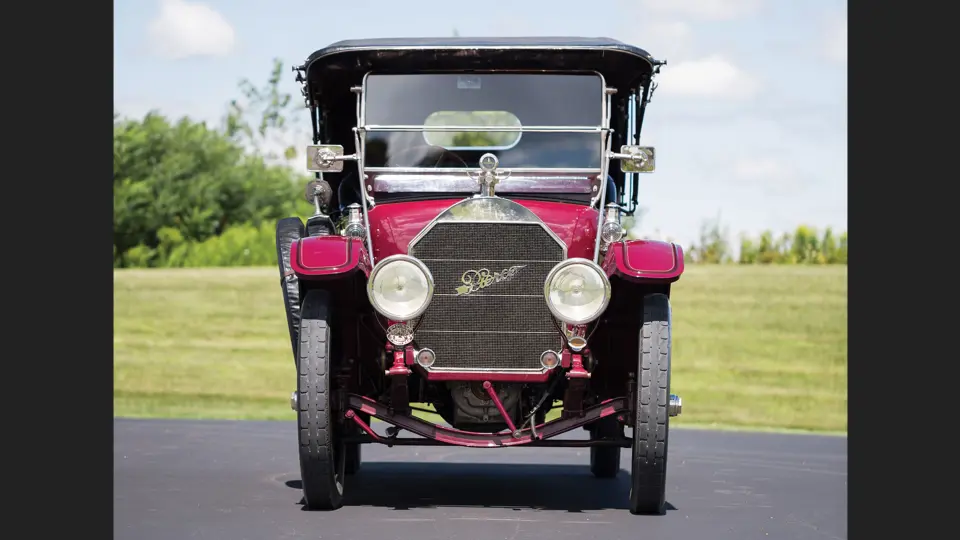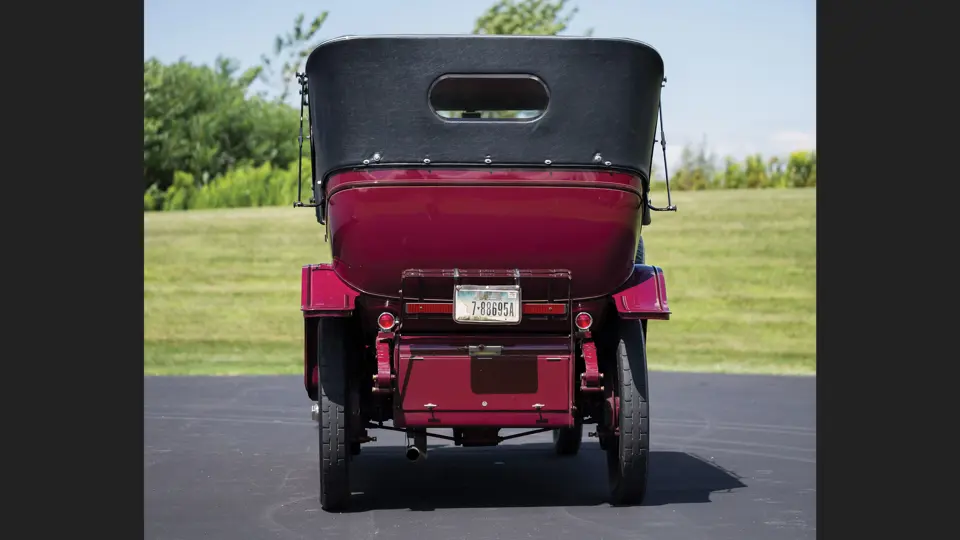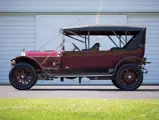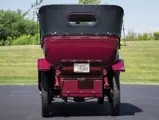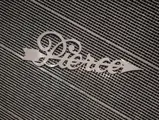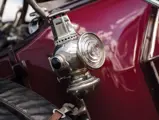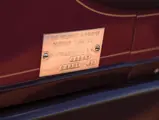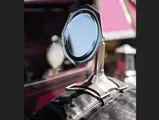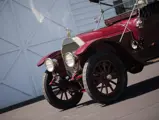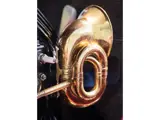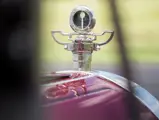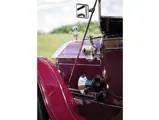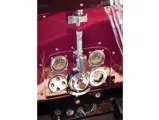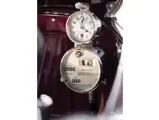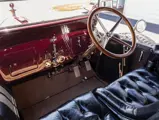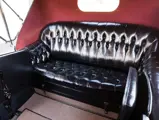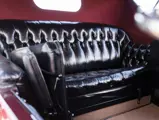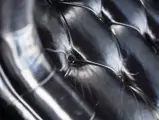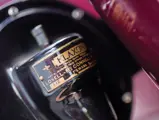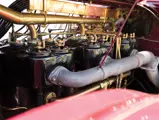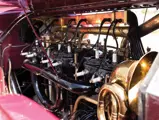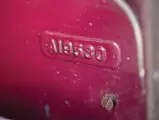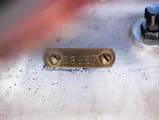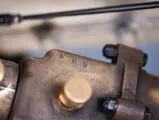The Pierce-Arrow Model 66 stands tall as one of the greatest performance automobiles of the Brass and Nickel Eras. Its power came from a massive T-head inline-six-cylinder engine that, at its introduction in 1910, displaced an already immense 714 cubic inches. Remarkably, by 1912, it had grown larger still, displacing nearly 825 cubic-inches. For some years, the Model 66 was noted by Guinness World Records as having the largest engine of any production automobile—larger, even, than the famed Bugatti Type 41 Royale.
More importantly, the Pierce-Arrow 66 remains virtually unequaled among automobiles of the period in terms of its power and scale. Its nearly 100 brake horsepower and prodigious torque are capable of moving it effortlessly alongside modern traffic, with the passengers literally riding head and shoulders above the rest.
The late Pierce-Arrow Society historian Bernard Weis’ decades of research indicate that about 200 examples of the 1912–1913 66-A were produced, 53 of which have been conclusively identified. Mr. Weis noted that of these, five original cars survive in restored condition.
CHASSIS NUMBER 66667: THE STAR OF THE PARADE
Chassis number 66667 was reportedly originally delivered in Chicago. In 1924, the car was acquired by the Minneapolis, Minnesota Fire Department, and converted into a fire truck. The late Minnesota fire historian Richard Heath noted that the conversion of chassis number 66667 was done by the Fire Department’s own shops, with the frame lengthened by three feet, the rear axle rigidly mounted, and the original touring body removed to accommodate a 600-gallon-per-minute pump. Photos of the vehicle taken decades later show that it was also converted to chain drive. Mr. Heath stated that the conversion was completed during 1924, at which point the 66 went into service; it remained at work in Minneapolis, in various configurations, until 1939, then was sold to a fire department near Fargo, North Dakota.
In 1950, the Pierce-Arrow was acquired from the North Dakota department by Ben Sanders, who used “Ol’ Betsy” to promote his radio station in Spencer, Iowa. After 32 years it was donated to the Abu Bekr Shrine of Sioux City for parade use.
Irving F. Jensen, Jr., of Sioux City, arranged to acquire the car from the Shrine in 1985, in a deal that in return he would restore it and supply it upon request for the Shriners’ parades for the next 10 years. In a letter to later owner Dan Gernatt, Mr. Jensen noted that he received the “frame, front fenders, front hub caps, front axle, rear axle and differential, cowl, hood, radiator, serial number plate, and license.” The restoration of the chassis, begun soon after, included returning it to its correct length, with the original front section properly straightened and the rear half restored using a portion of the rear frame from a 1914 Pierce-Arrow Model 48. The chain drive system was removed and replaced by the 1914 model’s rear axle. A proper transmission was built using a 1917 Pierce-Arrow truck’s transmission case, which Mr. Jensen noted was the same as for the 1913 66-A, and fitted with correct gears.
According to Bernard Weis’ records, when Mr. Jensen acquired the car, it was powered by a later 66-A-4 engine, number A4-605. Pierce-Arrow 66 enthusiast Rodney Flournoy had acquired engine number 66954, a 66-A-2 unit, and traded it to Mr. Jensen, who according to Mr. Weis converted it to a top-mounted water manifold, the correct 66-A specification. The cylinder jugs were carefully tested for cracks and then restored with new camshafts and Mahle pistons.
A complete, correct new seven-passenger touring car body was produced by Ray Graber, using the pristine original body of car number 66715 as a pattern and, crucially, 66667’s original cowl, as shown in photographs taken during the restoration. Mr. Jensen noted that the car retained its original firewall casting number, denoting its original delivery as a seven-passenger touring car. While Pierce-Arrow was famous for their cast aluminum coachwork, open bodies of the 1913 cars were, aside from the aforementioned cowl, conventionally constructed of sheet aluminum over an inner wood frame; this same method was used by Mr. Graber. Numerous other craftsmen contributed to the work, including noted metal shaper Fay Butler, who produced the correct belly pans.
The completed car was shown at the 1991 Pebble Beach Concours d’Elegance but failed to achieve any result in judging, as it was still mounted with an incorrect carburetor. After this disappointment, Mr. Jensen secured the loan of the correct item from the 66-A in the National Automobile Museum, so that it could be correctly copied. With its new carburetor the car proved very successful, winning the prestigious Antique Automobile Club of America Cup for 1991, and later appeared at the Pierce-Arrow Society’s 1992 National Meet in—appropriately enough—Minneapolis, winning a First Prize. It would also return to Pebble Beach in 1998, as part of a feature display of 66s. Mr. Jensen did follow up on his end of the bargain with the Abu Bekr Shriners and, by request, supplied the car for their parades for a decade.
In 2000, the car was sold by the Jensens to collector Dan Gernatt, Jr., of Collins, New York, who thrilled in utilizing it in many long-distance tours. To ensure reliability in these events, the Pierce-Arrow was equipped with modernized ignition, a modern clutch built from Mercedes-Benz components, rear hydraulic brakes, and an electric starter, although the correct original compressed-air starter was also left in place and remains today.
Following 15 years of enjoyment, Mr. Gernatt sold the Pierce-Arrow in 2015 to the current owner, in whose care it has continued to receive excellent maintenance. In the spring of 2019, it participated in the Brass in the Berkshires tour, running robustly, and encountered no issues along the route.
It remains the vital, potent beast that it was once when new—still capable of charging down the road with power and presence.

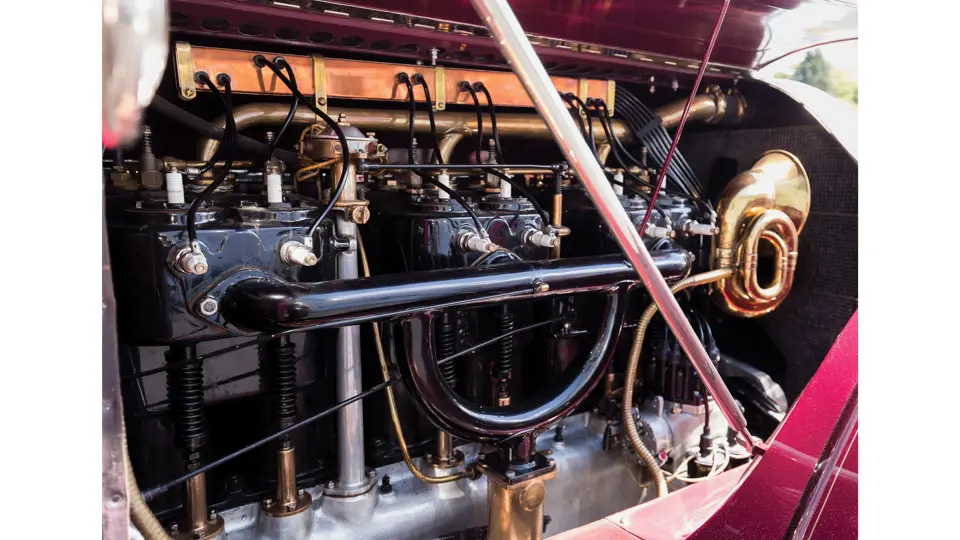


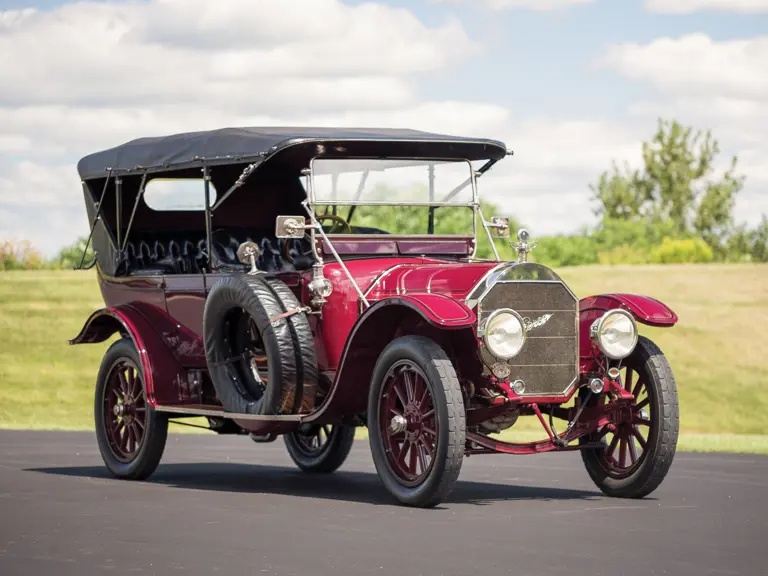
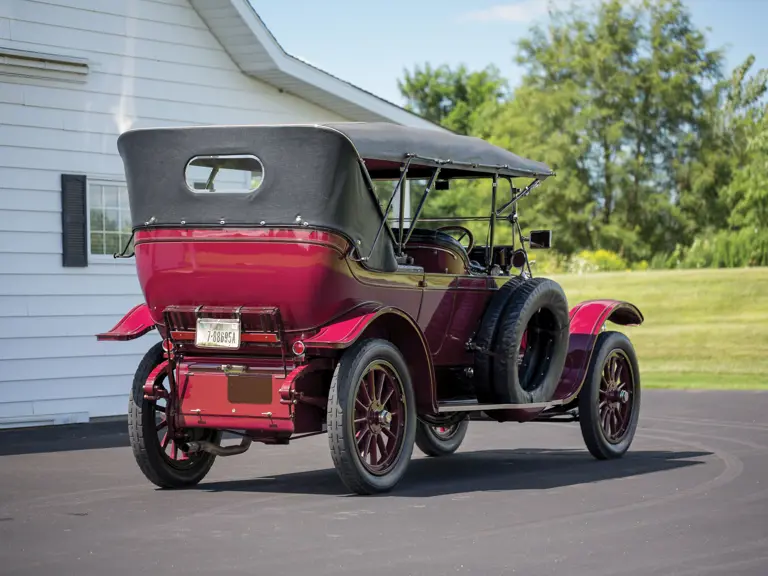
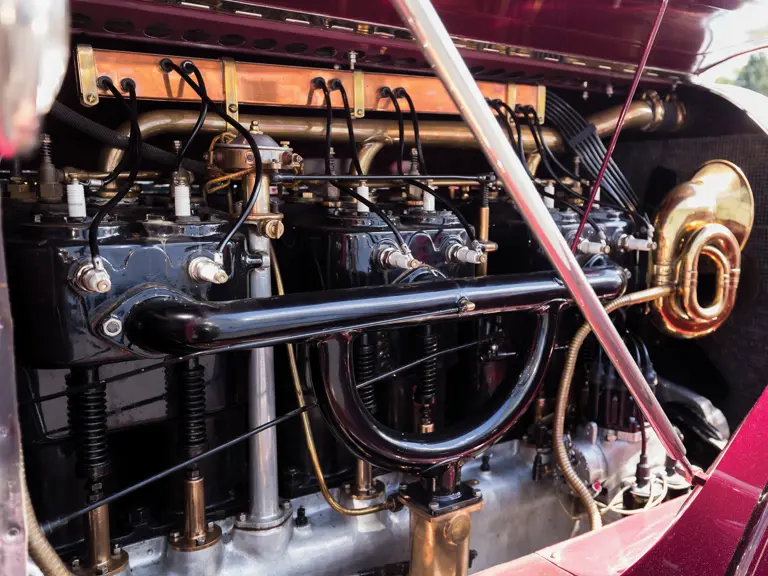
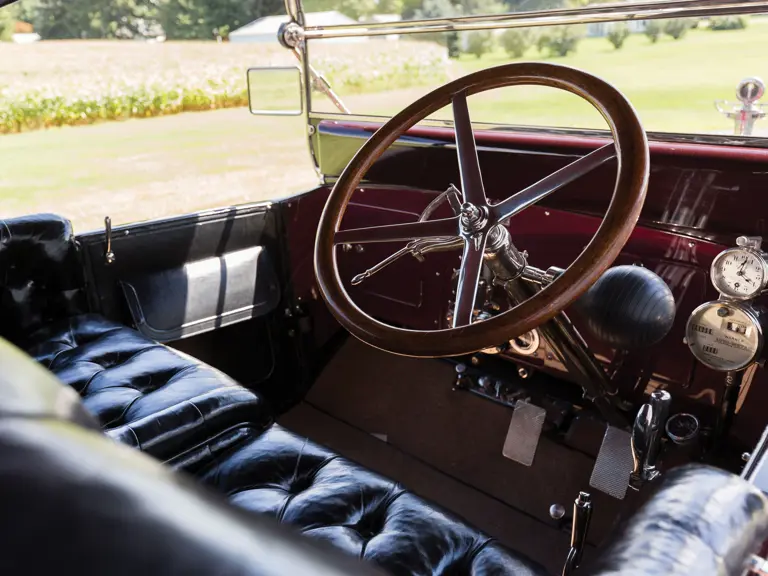
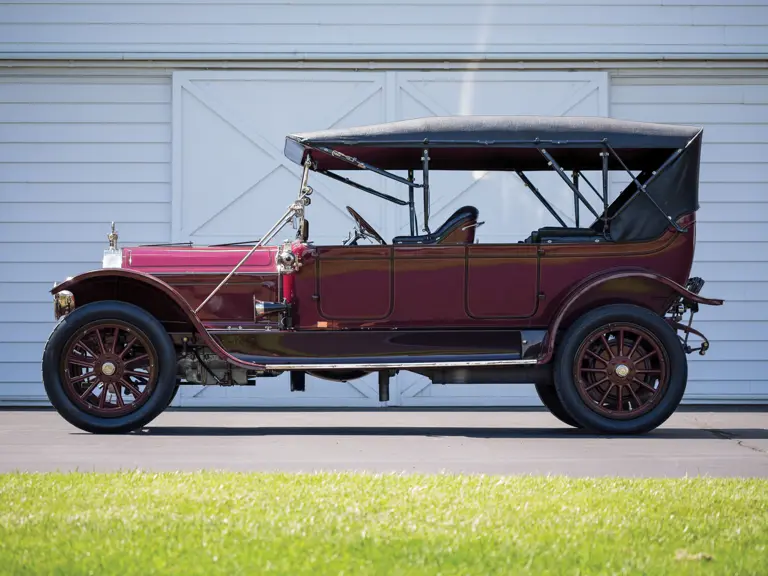

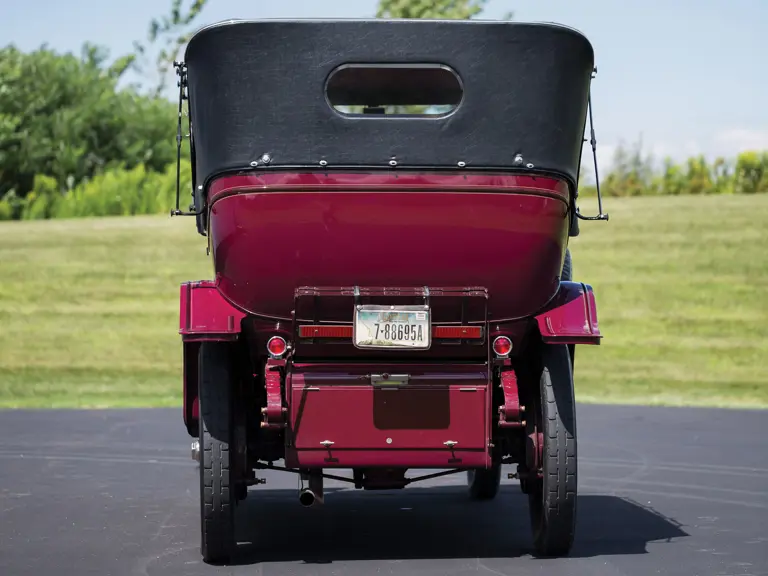
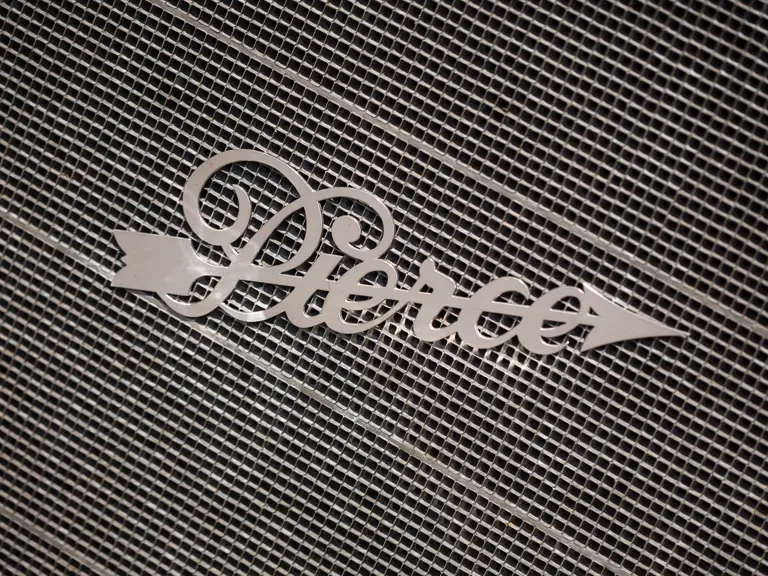
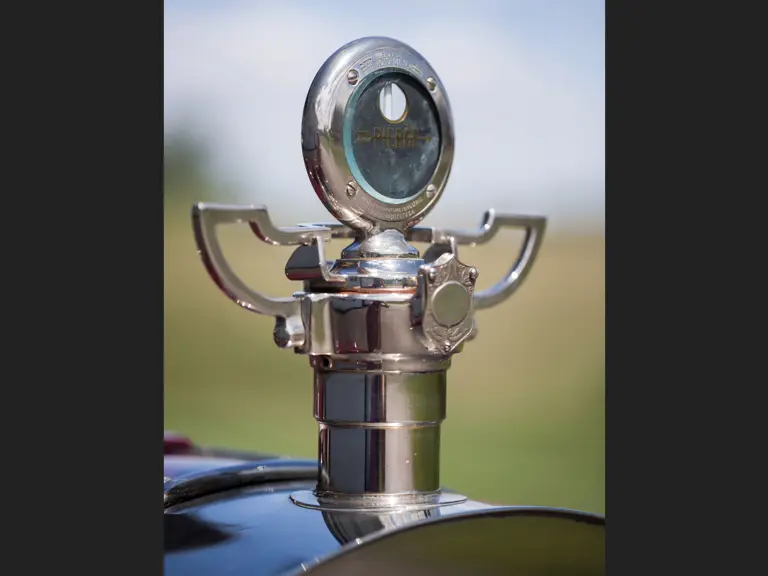
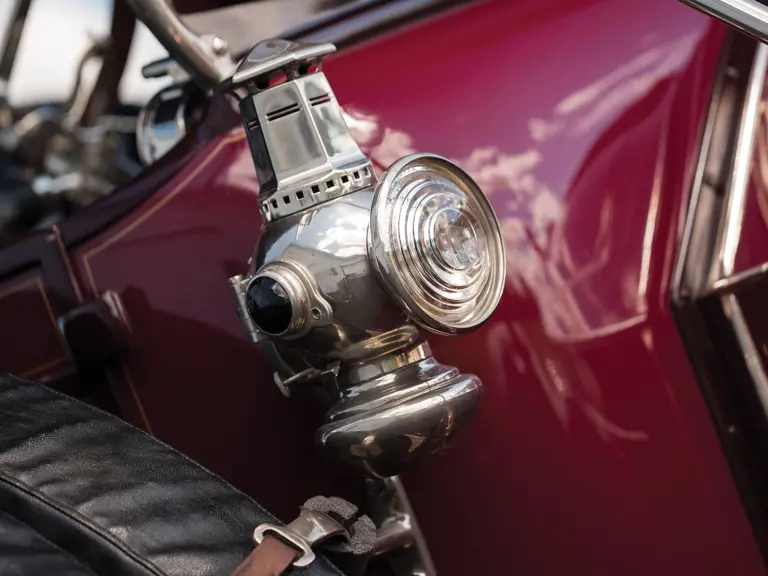


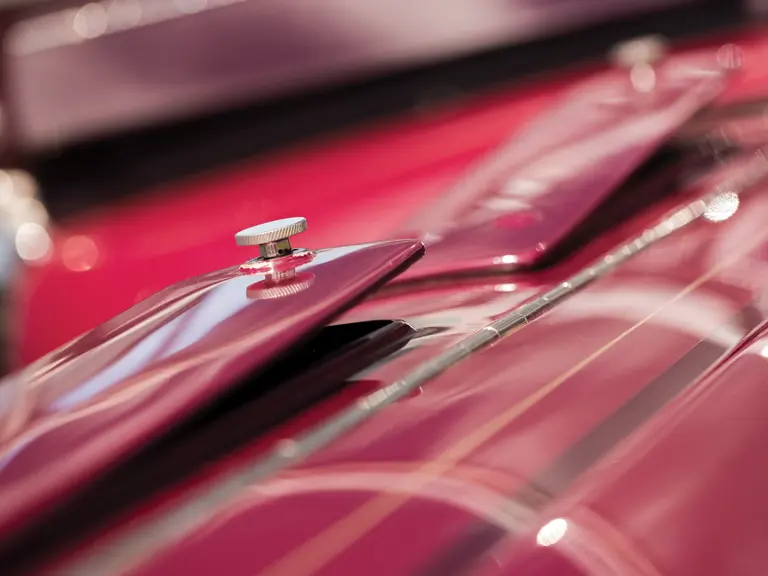

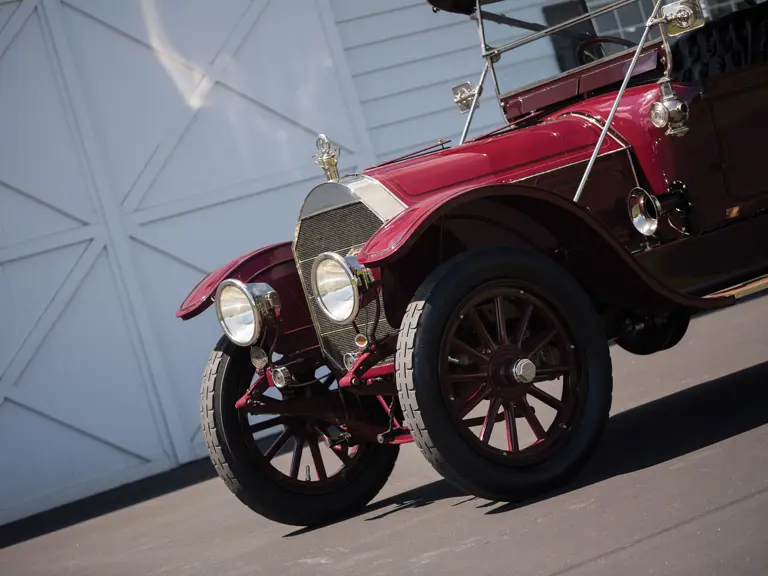
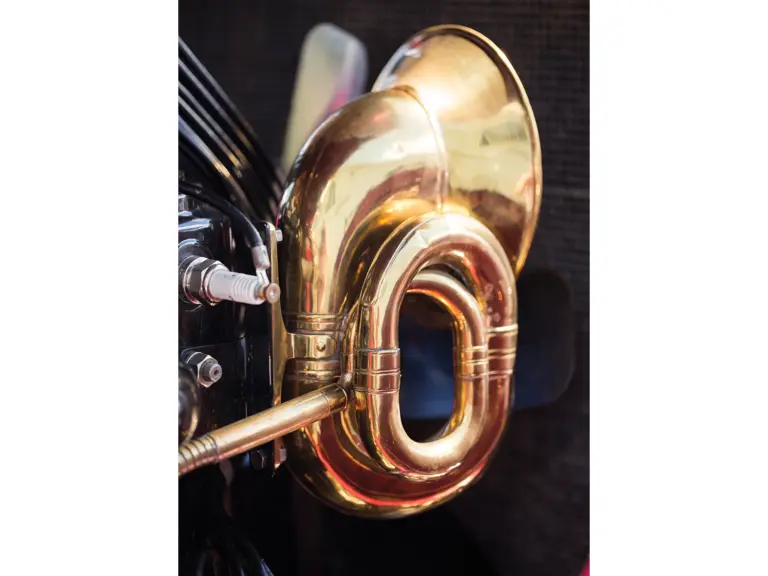
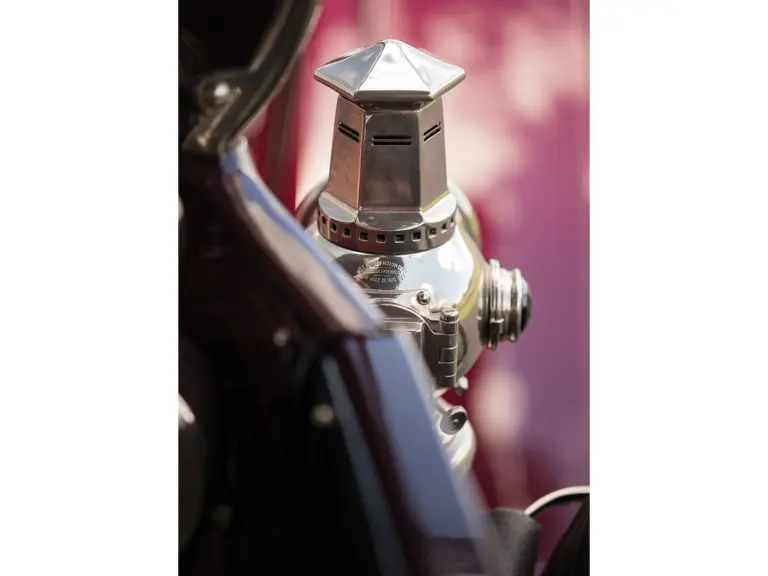



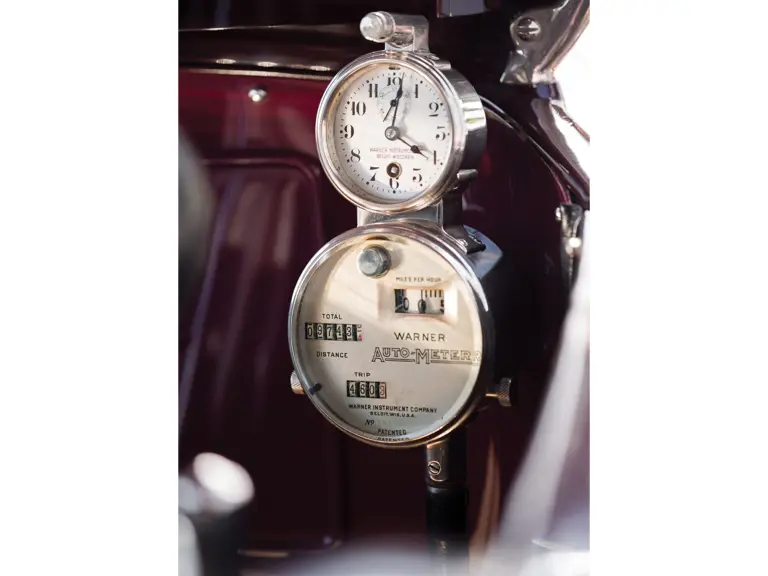
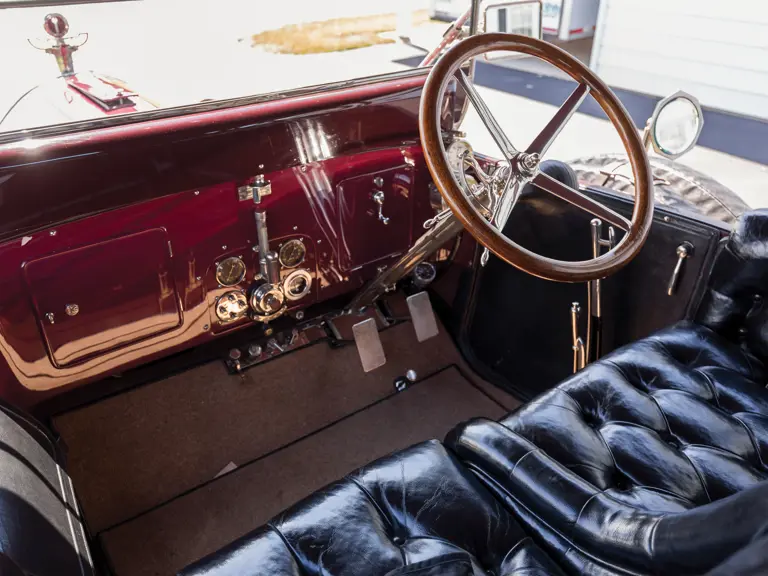

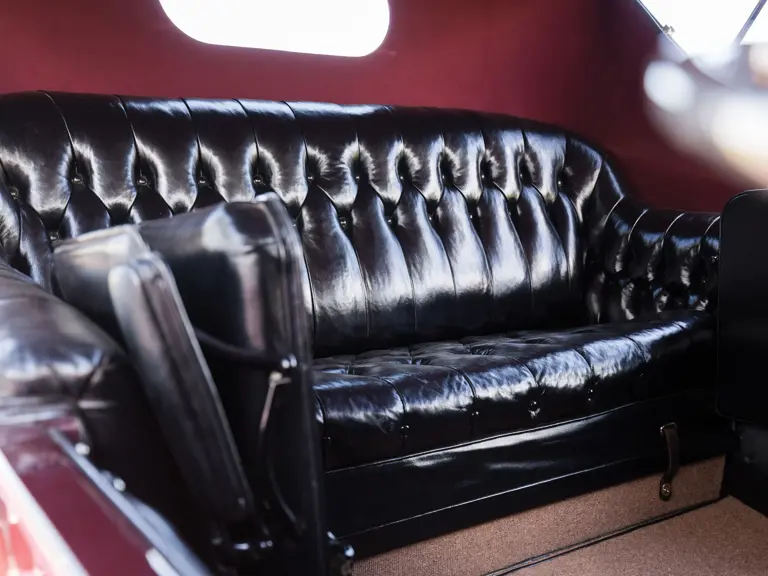
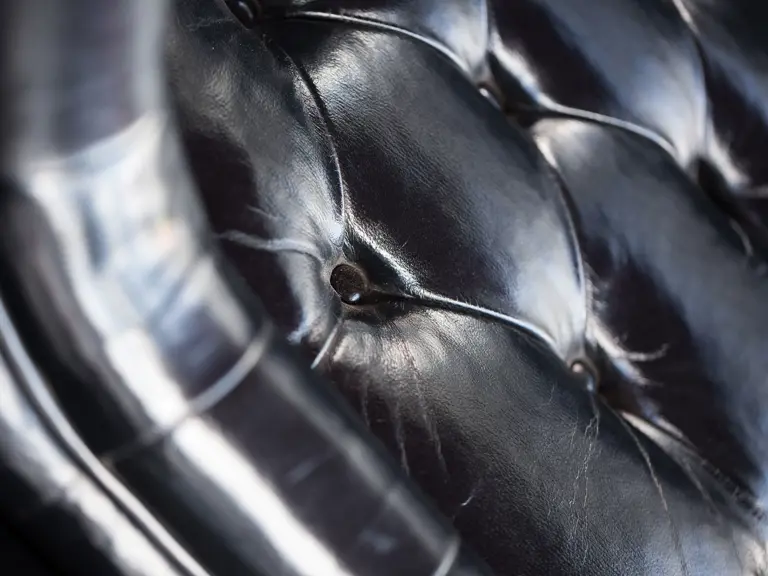
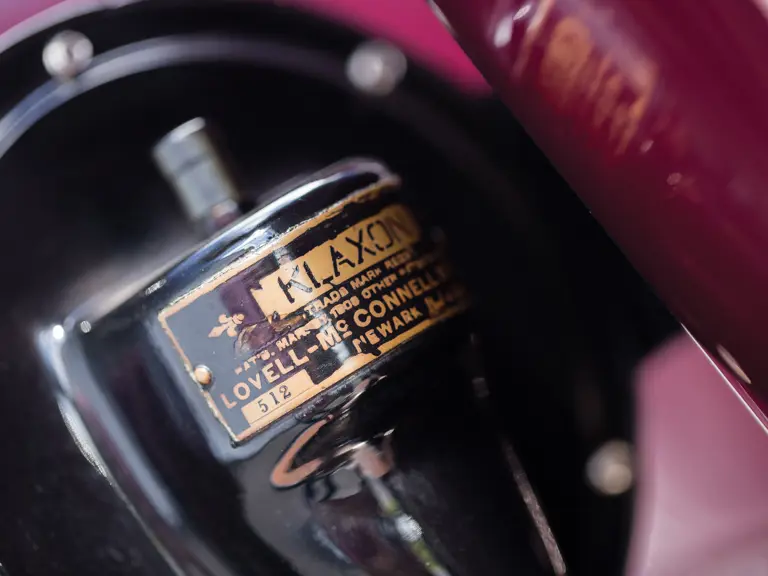
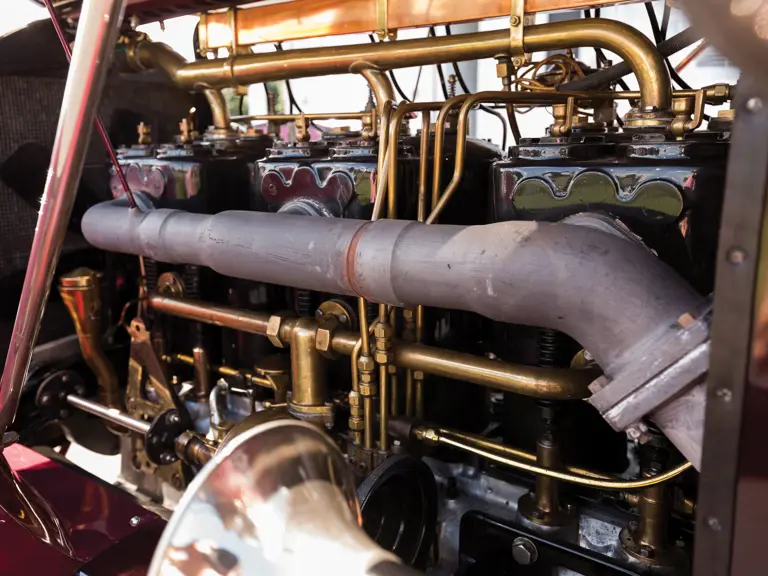
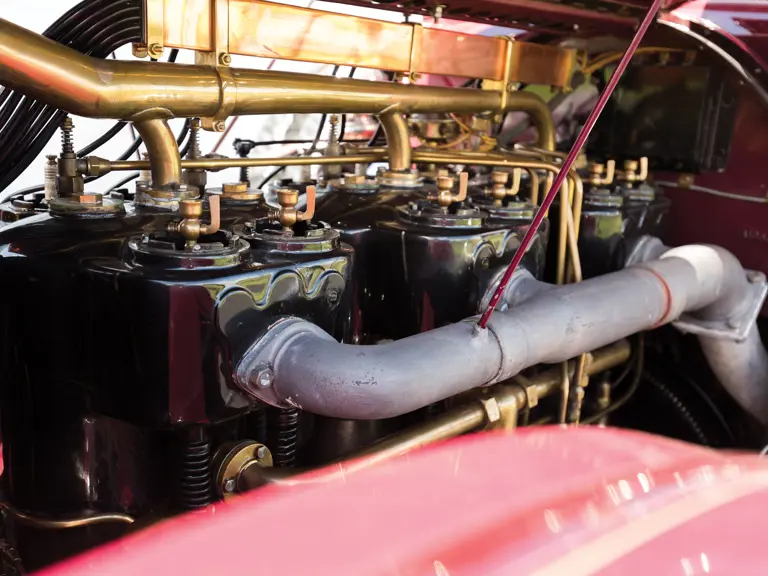
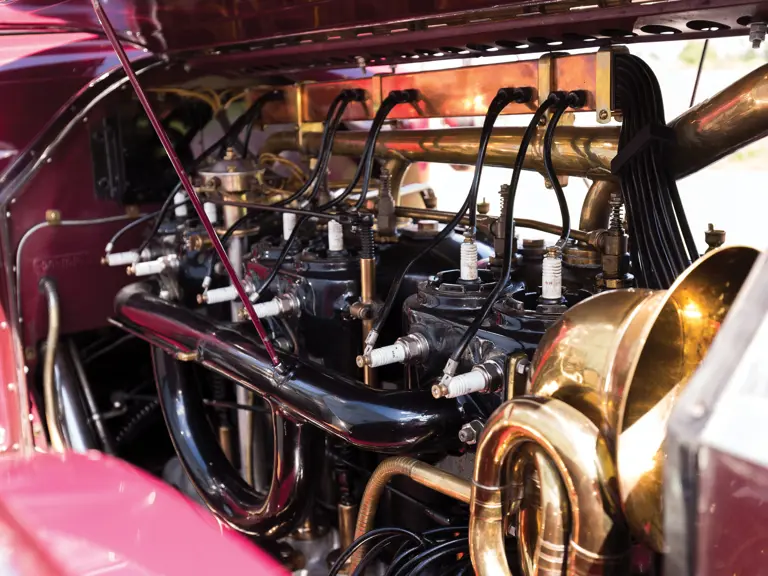
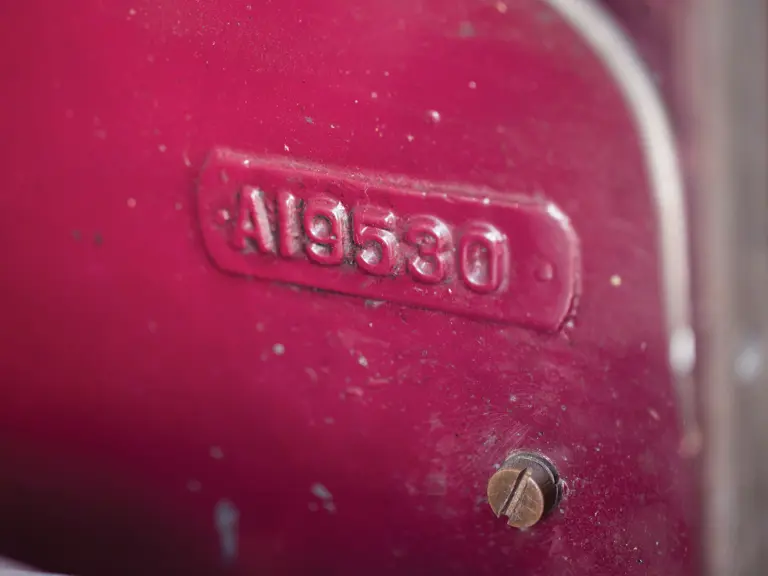
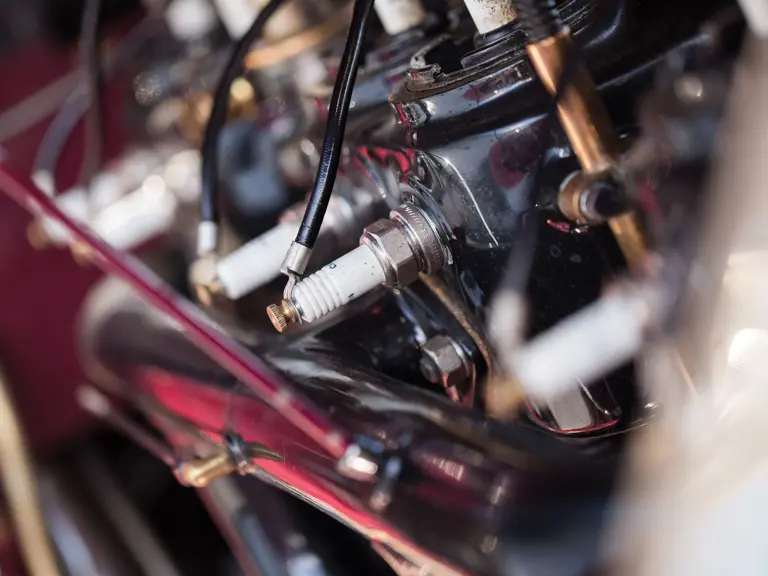
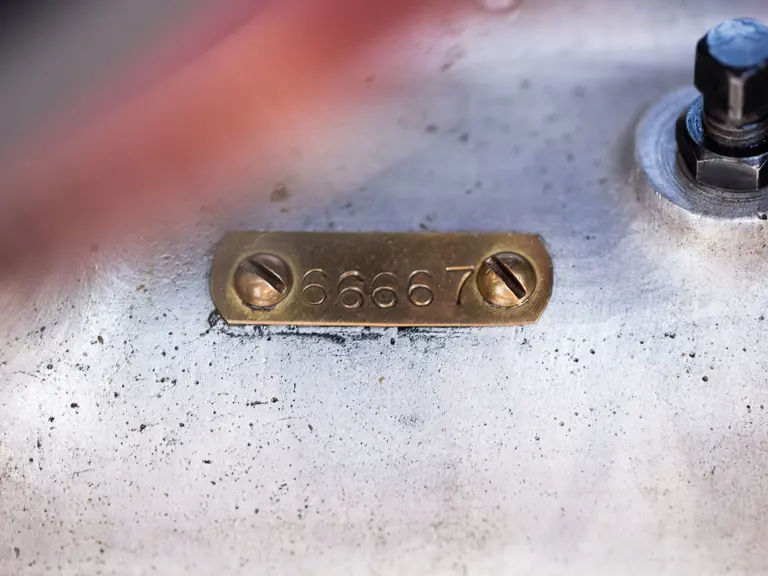
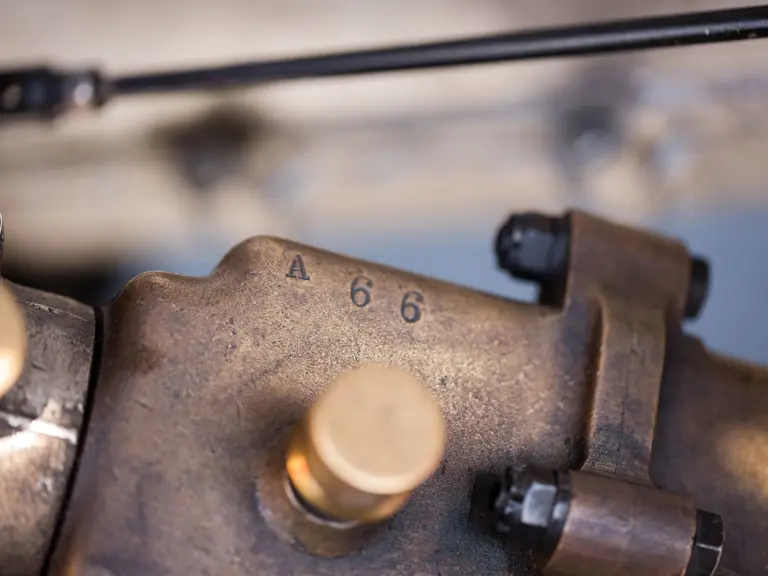
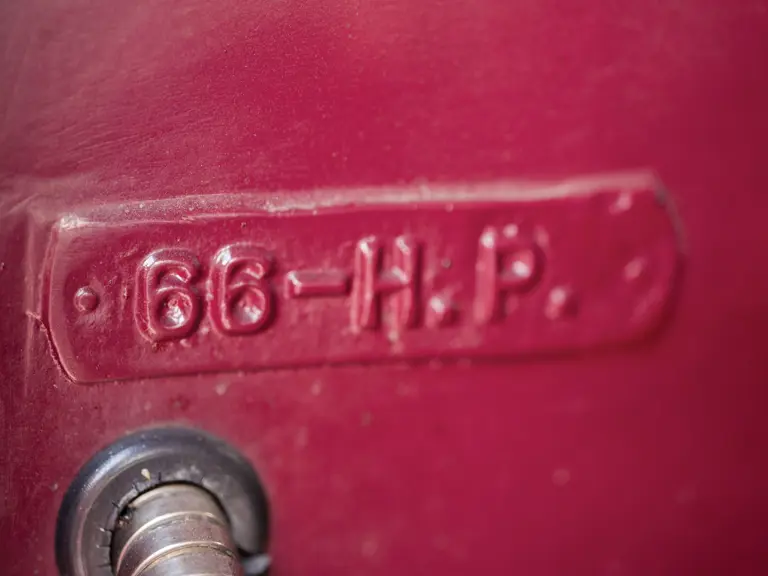
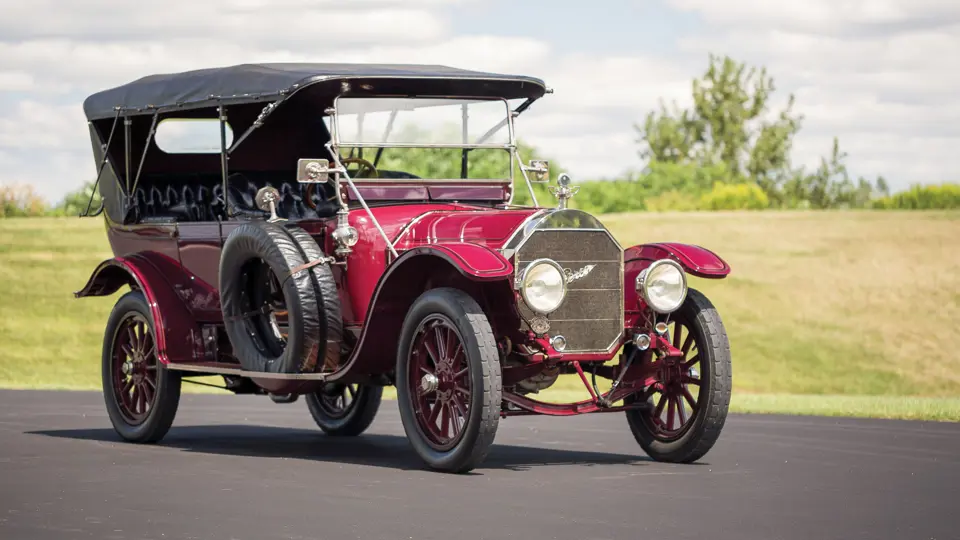
 | Hershey, Pennsylvania
| Hershey, Pennsylvania

